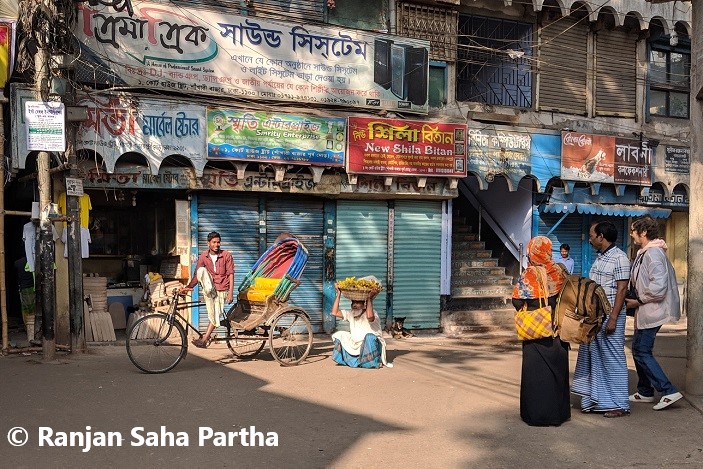How Are Lower Incomes of Bangladesh Experiencing COVID-19: Preliminary findings from an ongoing research.
2020.06.24
1 / 7ページ
While health authorities have been implementing different mechanisms and guidelines to control and prevent the spreading of COVID-19, little is known how people experiencing with these strategies and guidelines. Interviewing with lower incomes in Bangladesh, this research found that, people have different perceptions and experiences on the response mechanisms which are largely embedded on people’s social location and cultural context.
Background
The impact of pandemic is universal but the nature of its impacts depends on people’s social location (age, sex, income, ethnic identity, level of education) cultural atmosphere, sex, space and place. The experiences of pandemic may vary according to the nature of pandemics, preventive measures and coping strategies. The recent impact of novel coronavirus (COVID019) is not exceptional in this regard. The World Health Organization (WHO) developed relevant guidelines on infection prevention and control of COVID-19 and these guidelines are being followed by all countries across the world. The messages and strategies that are being disseminated (by different government agencies, media, NGOs, social media etc.) to prevent and control of COVID-19 in Bangladesh (GoB) are targeted to the life style of richer people. In this context, this ongoing research is trying to explore how lower income group people, day laborers and marginalized population perceive about these messages and guidelines, how these groups of people cope with this current crisis and how they live amid this pandemic.
A number of studies have been conducted in Bangladesh to understand people’s perception on COVID-19 prevention and control messages and the suitability of these messages based on life and livelihood of Bangladeshi people. Two issues identified in those studies; firstly, the lower income people do not perceive the messages appropriately due to illiteracy (Saeed, Nasrullah and Hosen 2020; Uddin 2020) and finally, they cannot follow and practice the COVID-19 prevention and control guidelines and messages due to economic constraints (Asif, Akram, Hossain, Khan 2020; BIGD 2020). Both of these factors are important to consider in understanding the reasons why people “do not follow” the messages and guidelines, other factors such as religious values and individual’s habits (Bourdieu 2000), everyday practices, social practices, and socio-ecological aspects are understudied. These factors may motivate or demotivate people to accept the messages and guidelines. Moreover, the lower income groups are not homogenous. They have the differences in income, cultural values and understanding, level of education and practices. This ethnographic research showed that, every day practices, habits, values and social and cultural perception on disease which are inter-linked beyond economic barriers and limitation of knowledge.
Description of our study
Since 1 April 2020, we have been conducting an ethnographic research aimed at understanding how people on low incomes (i.e. rickshaw and van pullers, day labourers, housemaids, garment workers, hawkers, shoe-makers etc.,) perceive the key terms associated with the government’s campaign, as well as how they are experiencing amid this pandemic. As of 20th May, 2020, we have conducted 30 interviews in the Savar and Ashulia areas just outside of Dhaka city. The study used qualitative telephone interviews as part of practicing social distance. However, the study critically examined the ‘Social Distancing’ in regards to the lower incomes’ experiences by following emic perspective and narrative approach. The study used explanatory model of medical anthropology and critical medical anthropological theories.
Health promotion specialists and behavior change advocates urged to develop culturally inclusive and contextualized health messages to ensure receptibility by the targeted population. One big challenge of using generic messages is that, people from different social locations may not accept these messages in a unitary manner as because different people have different perceptions and understandings (Kleinman 1980) . In this regard, interpretive approach of medical anthropology is our theoretical foundation of our study. Kleinman’s theory of explanatory model (EM) is important in understanding diversity of the meanings. However, EM has some limitations. Firstly, it fails to address the global political economy of health promotion in a wider context. Secondly, the EMs gives lack of concentration on the power relations of the construction of clinical realities of health messages. Finally, it does not prioritize the societal forces and structural determinants. Hence, a critical approach is required explain the health and illness. The critical approach of medical anthropology developed as part of critiques of EM and considered as a challenge to convey the analysis towards broader societal and economic dimensions. This approach was introduced by Soheir Morsy in 1979.

